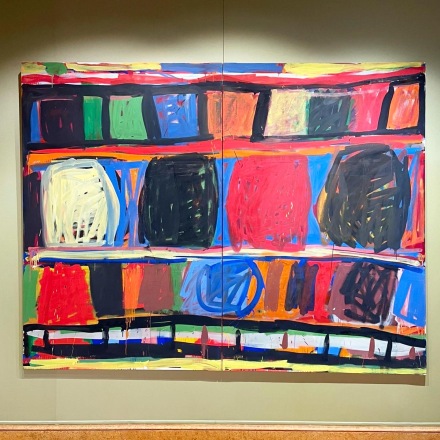
Stanley Whitney at Palazzo Tiepolo Passi, via Art Observed
Amid the bustle of the Biennale in Venice this week, artist Stanley Whitney brings a series of works made during the 1990’s in Italy, a tribute and ode to the country that here finds its voice spread across the Noble Floor of the sixteenth century Palazzo Tiepolo Passi, located along the central stretch of the Grand Canal.
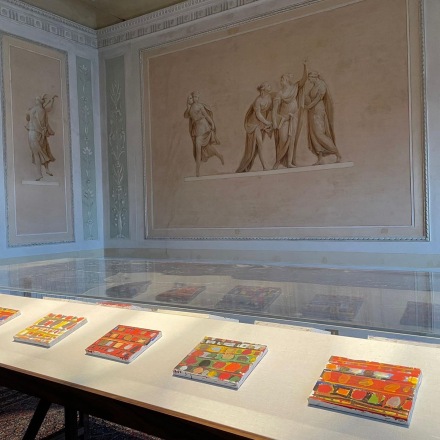
Stanley Whitney at Palazzo Tiepolo Passi, via Art Observed
Organized around a central hall – alongside an ornate balcony that looks over the Grand Canal and an additional terrace draped in a pergola of wisteria – the exhibition winds through the side rooms, each with its own unique character and décor. Whitney’s paintings are presented in dialogue with the Palazzo’s aesthetic history and remaining Venetian frescoes, painted by Andrea Meldola. The exhibition, presented by Buffalo AKG Art Museum and curators Cathleen Chaffee (Buffalo AKG Art Museum, New York) and Vincenzo de Bellis (Walker Art Center, Minneapolis), features large and small-scale paintings and works on paper, alongside Whitney’s sketchbooks, many exhibited for the first time, offering a glimpse into the artist’s process and experimentations.

Stanley Whitney at Palazzo Tiepolo Passi, via Art Observed
A look at Whitney’s practice over the last three decades seen through the lens of Italy, ‘Stanley Whitney: The Italian Paintings’ is not only the first time the New York-based painter will present works that have been exclusively created in Italy, but it is equally a homecoming for the paintings, created several hours south in the Roman capital, where the artist spent time during the 1990s. Considering and reframing Whitney’s work in relation to the Italian nation and its own diverse history of arts, the show unifies works from this period amid the historically resonant layout of the Palazzo.
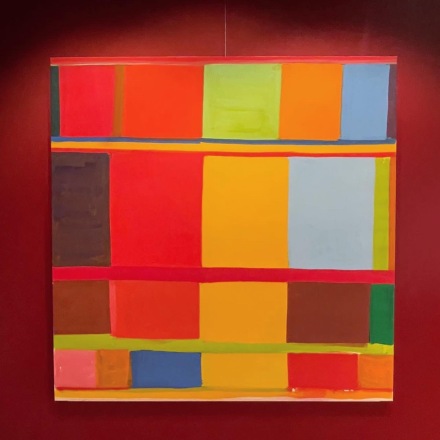
Stanley Whitney at Palazzo Tiepolo Passi, via Art Observed
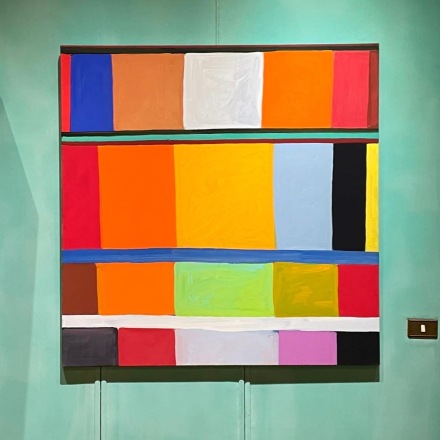
Stanley Whitney at Palazzo Tiepolo Passi, via Art Observed
While Whitney had been exploring the formal possibilities of color within ever-shifting grids of multi-hued blocks and all-over gestural fields since the mid-1970s, this visit to Rome marked a paradigm shift in his work, and Italian art and architecture soon became palpable in his abstractions. Whitney and his partner moved to Italy in 1992 as an escape from the New York art world – a difficult scene for an abstract artist of color to find a place in – and he was immediately drawn to the colors and forms surrounding him: the construction of the Pantheon and the Colosseum, Vatican City, the stacked urns in the Etruscan Museum, Renaissance history, as well as the play of the light on the buildings and the colors of the windows. In the diptychs on view, the circular forms of Whitney’s earlier paintings began to expand and draw towards each other, crowding out what might have previously been more open space in his compositions. Whitney has kept a studio outside Parma since the 1990s and the pace of that region became a key, albeit under-recognized part of his creative practice.
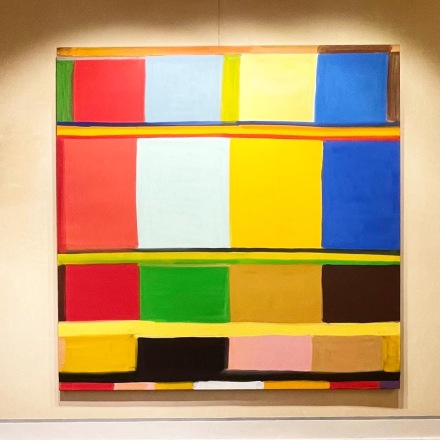
Stanley Whitney at Palazzo Tiepolo Passi, via Art Observed
In an adjacent gallery, visitors will see the next phase of Whitney’s journey, where these circular forms, grounded by horizontal bars, begin to coalesce into squares and rectangles while the space between them narrows further. The tightness of these stacked compositions announced a truly new direction and he began creating the densely gridded paintings he continues to make today, works characterized by architectural geometries, spontaneous brushwork, and endlessly variable juxtapositions of color.
Tracing the artist’s evolution over a prolonged engagement with the landscape of Italian art, the show is a perfect complement to the proceedings across town at the Arsenale.
– D. Creahan
Read more:
Stanley Whitney: The Italian Paintings [Exhibition Site]



